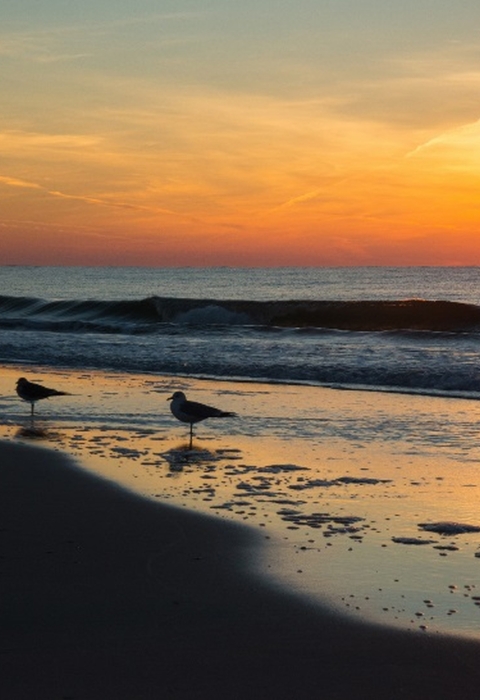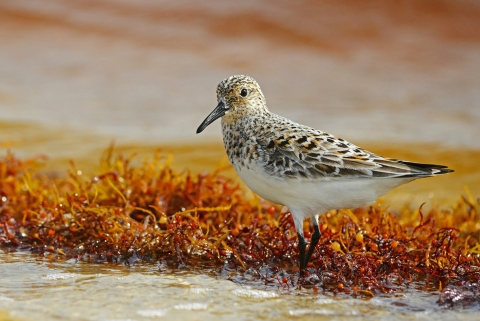What We Do
Wildlife conservation is at the heart of the National Wildlife Refuge System. It drives everything on U.S. Fish and Wildlife Service lands and waters managed within the Refuge System, from the purposes for which a national wildlife refuge national wildlife refuge
A national wildlife refuge is typically a contiguous area of land and water managed by the U.S. Fish and Wildlife Service for the conservation and, where appropriate, restoration of fish, wildlife and plant resources and their habitats for the benefit of present and future generations of Americans.
Learn more about national wildlife refuge is established to the recreational activities offered to the resource management tools used. Using conservation best practices, the Refuge System manages Service lands and waters to help ensure the survival of native wildlife species. Refuges deploy a host of scientifically sound management tools to address biological challenges, all aimed at ensuring a balanced conservation approach to benefit both wildlife and people.
Refuge staff use a variety of habitat management techniques to maintain, recover or enhance plant and wildlife values. Inventory and monitoring, prescribed fire, invasive species invasive species
An invasive species is any plant or animal that has spread or been introduced into a new area where they are, or could, cause harm to the environment, economy, or human, animal, or plant health. Their unwelcome presence can destroy ecosystems and cost millions of dollars.
Learn more about invasive species control, and standardized wildlife and vegetation surveys are conducted at Bon Secour throughout the year to inventory populations, document habitat use, and manage habitats.
Management and Conservation
In recent years, invasive, exotic plants have become a serious threat to national wildlife refuges throughout the United States. Many of these plants reproduce rapidly, have few predators, and have low food value for wildlife. Exotic plant management is an ongoing activity. The control or prevention of invasive plants that otherwise would take over valuable habitat areas is vital to the survival and existence of native plant and wildlife species. In efforts to combat these noxious, invasive plants, chemical and mechanical control of Chinese tallow tree, cogon grass, and torpedo grass is conducted on the refuge.
Prescribed Fire
Fire has always played an important role in the coastal ecosystem. Historically, lightning-ignited fires burned vast acres of maritime forest until they reached large bodies of water or were extinguished by rainfall. Today, the refuge conducts prescribed burns, which are smaller and less intense than most wildfires, to reduce the risk of catastrophic wildfires to people and property.
Because fire is a natural part of the ecosystem, prescribed burns also create conditions favored by many species of native plants and wildlife. Fire reduces the density of vegetation in the mid- and understory which allows more sunlight to reach the forest floor. As a result, grasses and other early successional plant species can germinate and contribute to the diversity of available food for wildlife. At any given time, only a small portion of the refuge’s 7,000 acres have been recently burned so migratory birds and other wildlife can use a variety of habitats in different stages to fulfill their needs.
Trapping Occurs on this Refuge
Trapping occurs on this refuge. Trapping is a wildlife management tool used on some national wildlife refuges. Trapping may be used to protect endangered and threatened species or migratory birds or to control certain wildlife populations. The U.S. Fish and Wildlife Service also views trapping as a legitimate recreational and economic activity when there are harvestable surpluses of fur-bearing mammals. On this refuge trapping occurs only as a wildlife management tool and is prohibited for the public. Outside of Alaska, refuges that permit trapping as a recreational use may require trappers to obtain a refuge special use permit. Signs are posted on refuges where trapping occurs. Contact the refuge manager for specific regulations.
Our Projects and Research
Refuge staff conduct a variety of inventory and monitoring studies and welcome external research on the refuge.
The U.S. Fish and Wildlife Service issues permits under various wildlife law and treaties at a number of offices throughout the country. Permits enable the public to engage in legitimate wildlife-related activities that would otherwise be prohibited by law. Service permit programs ensure that such activities are carried out in a manner that safeguards wildlife. Additionally, some permits promote conservation efforts by authorizing scientific research, generating data, or allowing wildlife management and rehabilitation activities to go forward.
Permits are handled by permitting programs in International Affairs (Management Authority), Endangered Species, Law Enforcement, and Migratory Birds.


